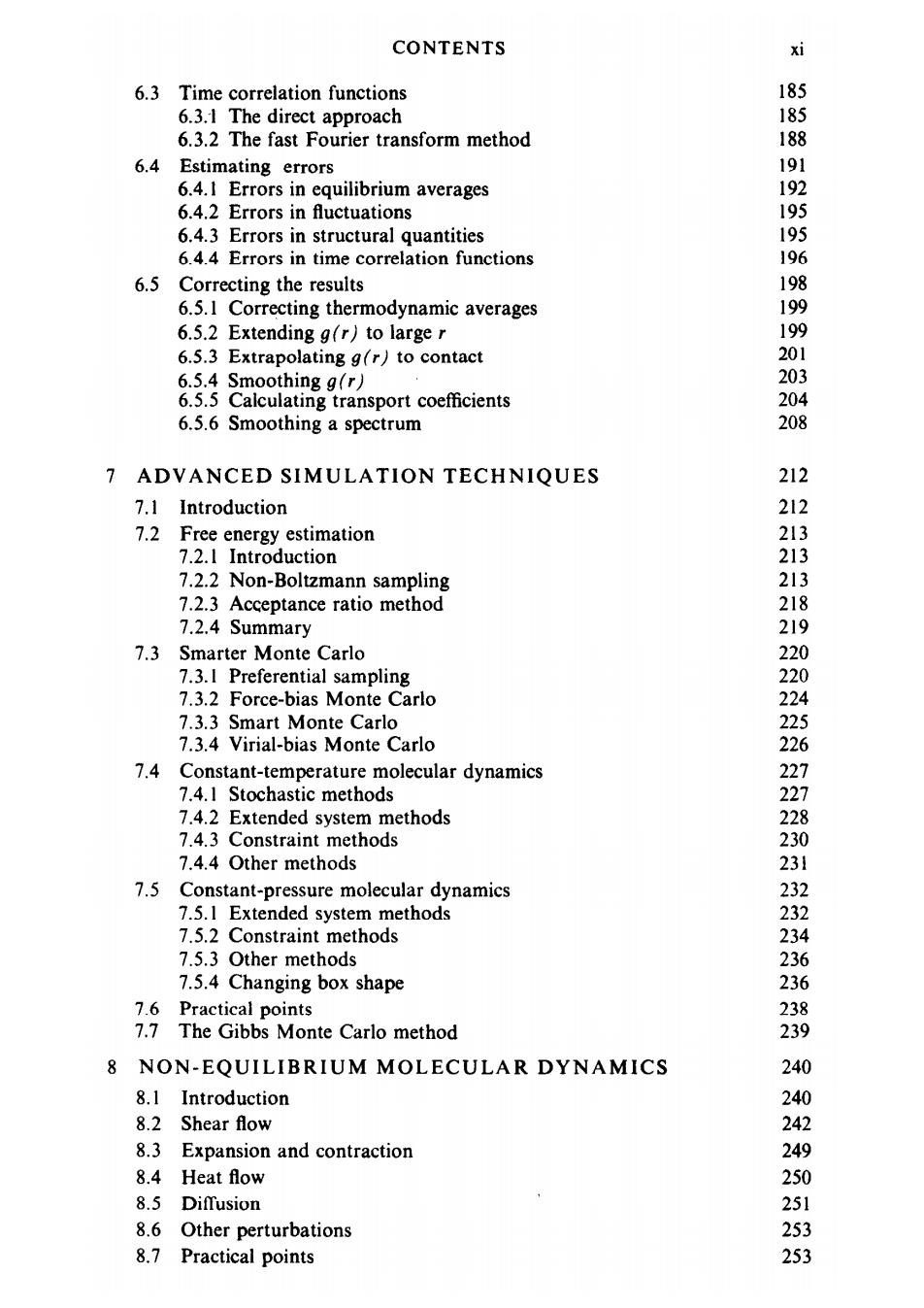正在加载图片...

CONTENTS xi 6.3 Time correlation functions 185 6.3.1 The direct approach 185 6.3.2 The fast Fourier transform method 188 6.4 Estimating errors 191 6.4.I Errors in equilibrium averages 192 6.4.2 Errors in fluctuations 195 6.4.3 Errors in structural quantities 195 6.4.4 Errors in time correlation functions 196 6.5 Correcting the results 198 6.5.1 Correcting thermodynamic averages 199 6.5.2 Extending g(r)to large r 199 6.5.3 Extrapolating g(r)to contact 201 6.5.4 Smoothing g(r) 203 6.5.5 Calculating transport coefficients 204 6.5.6 Smoothing a spectrum 208 7 ADVANCED SIMULATION TECHNIQUES 212 7.1 Introduction 212 7.2 Free energy estimation 213 7.2.1 Introduction 213 7.2.2 Non-Boltzmann sampling 213 7.2.3 Acceptance ratio method 218 7.2.4 Summary 219 7.3 Smarter Monte Carlo 220 7.3.I Preferential sampling 220 7.3.2 Force-bias Monte Carlo 224 7.3.3 Smart Monte Carlo 225 7.3.4 Virial-bias Monte Carlo 226 7.4 Constant-temperature molecular dynamics 227 7.4.1 Stochastic methods 227 7.4.2 Extended system methods 228 7.4.3 Constraint methods 230 7.4.4 Other methods 23】 7.5 Constant-pressure molecular dynamics 232 7.5.1 Extended system methods 232 7.5.2 Constraint methods 234 7.5.3 Other methods 236 7.5.4 Changing box shape 236 7.6 Practical points 238 7.7 The Gibbs Monte Carlo method 239 8 NON-EQUILIBRIUM MOLECULAR DYNAMICS 240 8.1 Introduction 240 8.2 Shear flow 242 8.3 Expansion and contraction 249 8.4 Heat flow 250 8.5 DifTusion 251 8.6 Other perturbations 253 8.7 Practical points 253